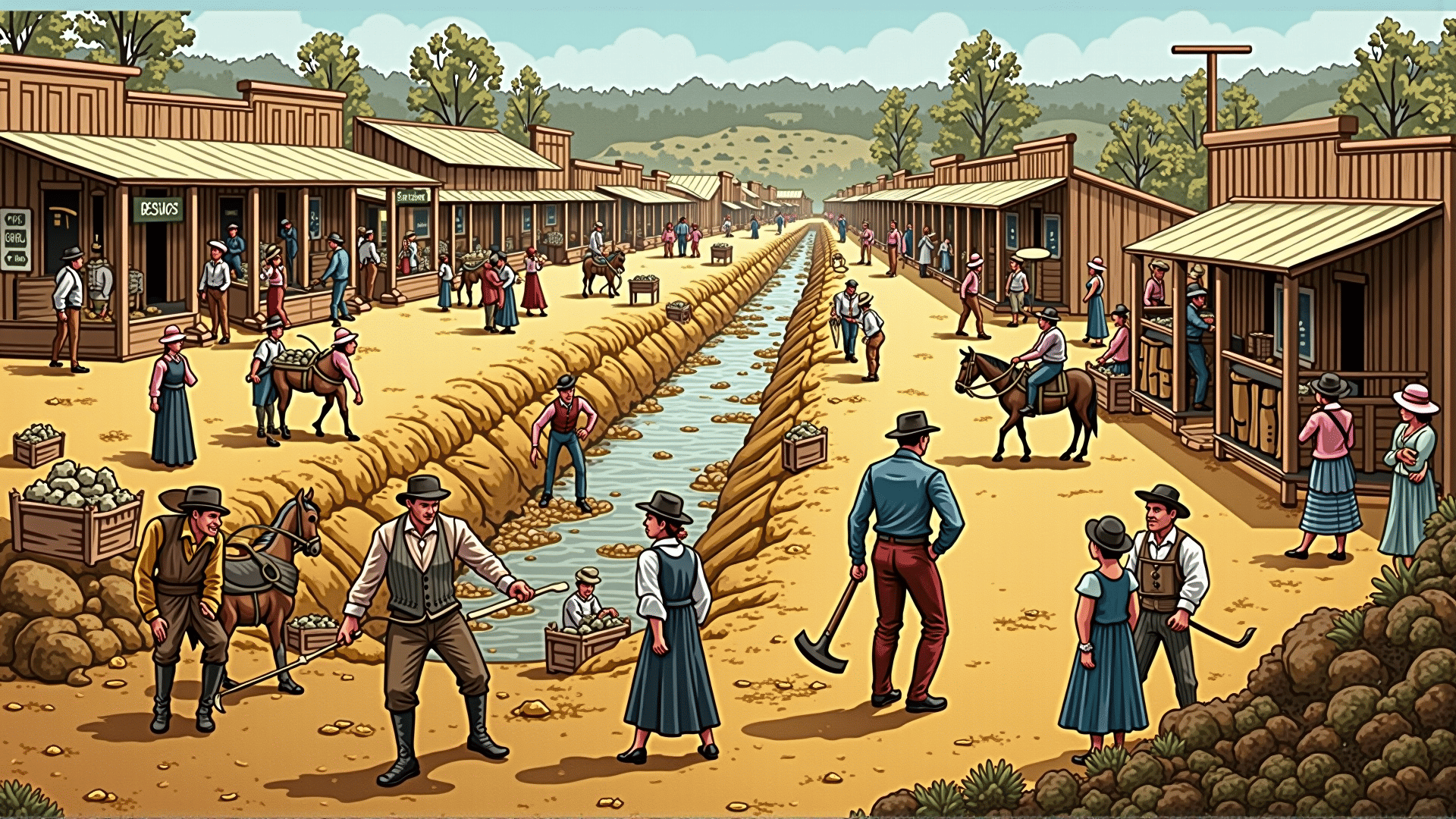In the mid-19th century, Australia underwent a profound transformation, driven largely by the Gold Rushes that began in 1851. These events set in motion a series of economic and social changes, reshaping the nation in ways that continue to resonate today.
The discovery of gold in New South Wales and Victoria captivated not only Australia but the world, drawing thousands of migrants from across the globe. This influx of prospectors, traders, and laborers rapidly increased the population and led to the acceleration of infrastructure development. Roads, ports, and railways sprang up to accommodate the growing number of settlers, facilitating easier access to remote mining sites and connecting newly formed towns with established cities.
The Gold Rushes significantly altered the population landscape. Suddenly, Australia had become one of the most culturally diverse places on Earth. Migrants poured in from Europe, China, and the Americas, contributing to a melting pot of cultures, languages, and traditions. This newfound diversity seeded early discussions about national identity and inclusivity.
Economically, the Gold Rushes served as a catalyst for development. They introduced a wave of hard currency which invigorated colonial economies, prompting the establishment of businesses that supplied goods and services to the mining industry. Local manufacturing received a boost, addressing the demands of a burgeoning market hungry for supplies, from clothing to equipment.
However, the Gold Rushes also exposed stark disparities in wealth distribution. Those who found gold could become instantly prosperous, while others – including many miners – labored tirelessly with little to show for their efforts. This phenomenon highlighted and often widened gaps between different social strata.
The social upheaval induced by the Gold Rushes necessitated new forms of governance and societal organization. As thousands settled into mining towns, they required systems of law and order, healthcare, and education. Colonies responded by implementing frameworks that would eventually knit the nation into a cohesive whole. Initiatives were introduced to address workers' rights and promote equitable laws.
Politically, the influence of these migrant communities could not be overlooked. Sustained demands for representation and fair governance led to political reforms. The Eureka Rebellion of 1854, a miner-driven protest against oppressive mining licenses and lack of representation, became a pivotal moment in Australian democracy. This uprising fueled debates that contributed to the quest for a fairer electoral system and more inclusive governance.
In summary, the Gold Rushes were not merely events in a historical chronicle but foundational episodes that shaped the contours of Australia's society. They cultivated economic opportunities, triggered significant infrastructural developments, and sparked early considerations of social justice and political empowerment. The legacies of these transformations provide insight into how Australia evolved from a series of colonies into a unified, diverse, and economically vibrant nation.
